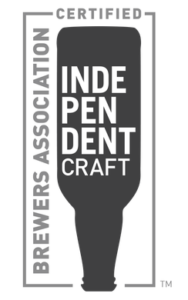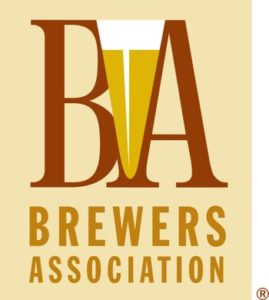Beer! It’s been bringing communities together for 5000 years.
Over time, the American beer  market has fluctuated significantly. The first of these ebbs and flows are due to Prohibition and, after that, conglomeration. In 1873 there were over 4000 breweries in the U.S., but by 1983 there were only 53 independent beer companies left, all with a similar style of beer being produced.
market has fluctuated significantly. The first of these ebbs and flows are due to Prohibition and, after that, conglomeration. In 1873 there were over 4000 breweries in the U.S., but by 1983 there were only 53 independent beer companies left, all with a similar style of beer being produced.
This was the beginning of the craft beer revolution. Between 1983 and today we see over 5,000 breweries, with over 12% of the market consisting of independently owned craft companies. The market’s being taken back by craft brewing companies, and their backbone, the Brewers Association (BA).
The role of the BA is to protect “to promote and protect American craft brewers, their beers and the community of brewing enthusiasts.” It’s a non-profit that has assembled an experienced team of professionals from within the industry, both in the office and on the board.
One function we here at Bard can appreciate is the sustainability resources that the BA provides. My BA mentor, John Stier, and the sustainability ambassador have created a national internship program for master’s students to help craft breweries advance in sustainability.
My own internship started with contracting breweries that are members of the BA to sign up for the program. This required me to make brewery door to brewery door sales. I eventually enlisted two breweries in Asheville, NC– Bhramari and UpCountry Brewing–for the program. We work with breweries to help benchmark their resource consumption practices over time. This step is crucial for reducing a brewery’s environmental footprint and helping it save money.
 Due to the national nature of this project, we’ll be able to use this preliminary data to demonstrate how competitive the breweries we are working for are in their respective size categories.
Due to the national nature of this project, we’ll be able to use this preliminary data to demonstrate how competitive the breweries we are working for are in their respective size categories.
Using the market analysis as a target, we’ll then create a plan to help the breweries reduce their resources while avoiding the costs associated with using more resources. We do this by creating a 3-year plan:
Year 1: We help create a plan for breweries to integrate sustainability into their workforce.
Year 2: We help find quick and easy ways for breweries to get a return on their investment over a short period of time. This is made possible by the BA’s sustainability best practice guides, which are open access to anyone.
Year 3: We create a plan for the breweries to implement long-term sustainability equipment and tools for a full integration into the culture.

My work in the CEP program has helped me throughout the internship process. I had to analyze data, and I will have to interpret it for the most relevant information when presenting it to the breweries. Second, the presentation skills I learned in my communications class will come in useful when communicating the main ideas of the data s effectively as possible. Another skill I had to learn was door to door sales. Without the confidence I gained through communications, this skill would not have come so easily. I would practice my pitch several times before introducing myself to a brewery.
Lastly, the creation of the best practice document during our Bard CEP spring “spotlight” will translate well from theory into practice for this internship. I will be taking best practices for sustainability and compiling them into a three-year plan tailored to each brewery, an important concept from CEP.
Nothing could make me happier than helping the brewing industry on its path to efficiency and sustainability. It is yet another way that Bard is leading the change. Cheers.

